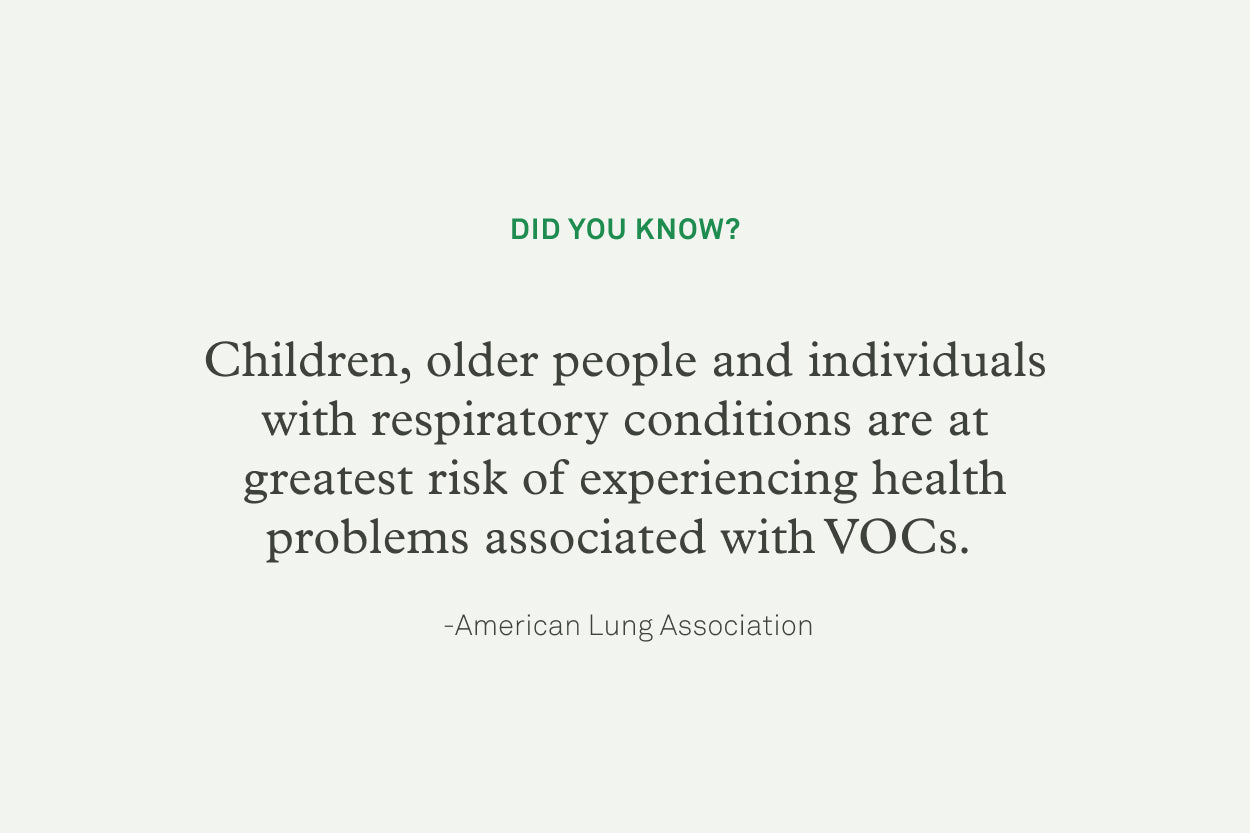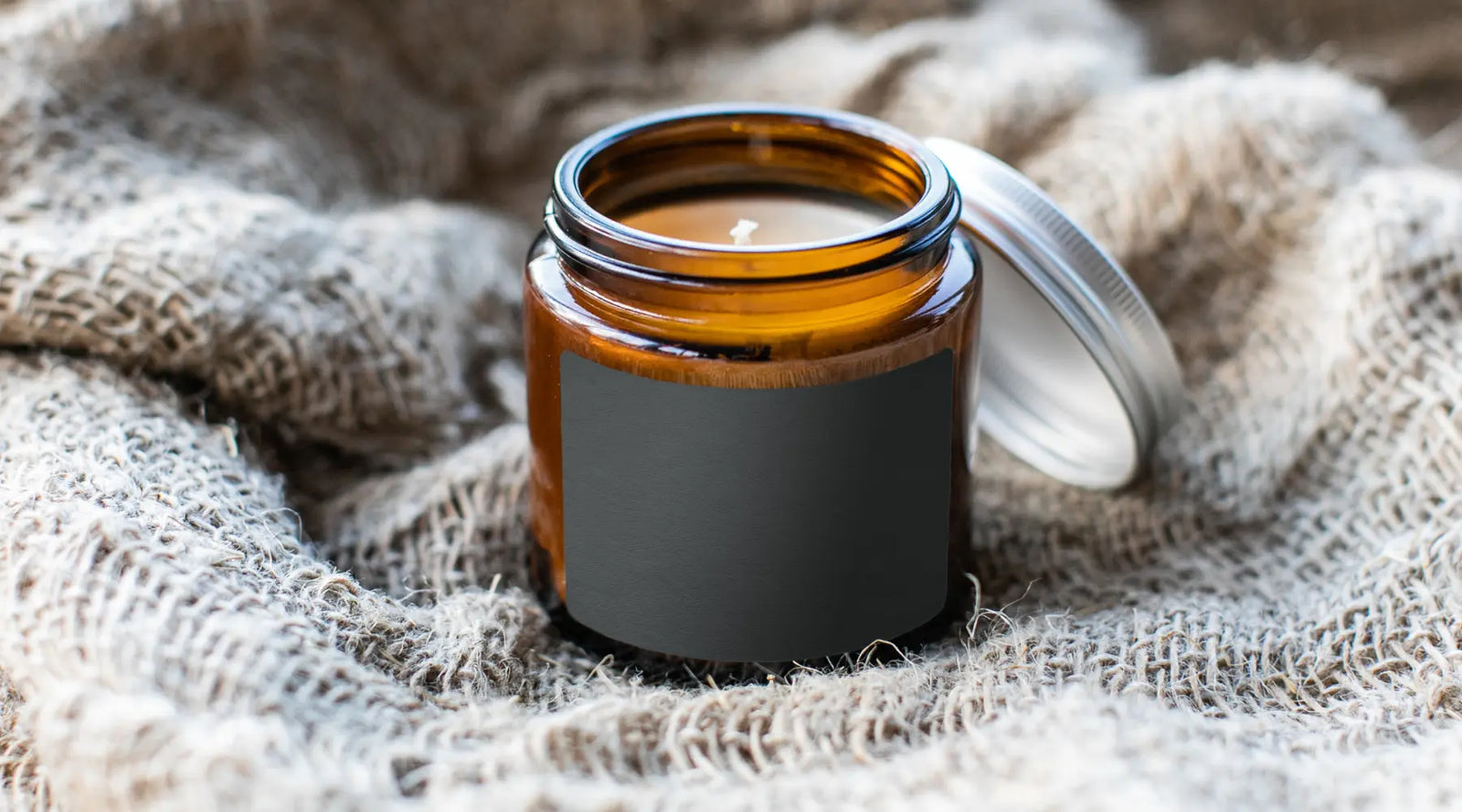Updated by the Molekule Insights Team on February 23, 2024.
Top Indoor Air Pollutants
Sometimes, the pollution is coming from inside the house. You likely already know that pollutants can be more concentrated indoors, particularly due to lack of fresh air flow via windows, HVAC systems, or air purification. But although some of this indoor pollution is from external sources, like exhaust from cars on the street, or pollen from flowering trees outside your open window, much of the time, the source of indoor pollution can be the objects, activities, and living beings in your home.
We spend 90% of our lives indoors, so we can identify quite a few types of indoor air pollution. Pbviously, you’re aware of indoor pollution when your dinner burns and smoke fills the kitchen, or visible mold starts to make a room smell like mildew. Yet, other forms of air pollution are not as easy to identify. Take volatile organic compounds (VOCs), for instance. These are gases that may or may not have an odor and can come from some surprising sources. From cleaning products to furniture to art supplies, many household products can emit VOCs — and, in many cases, manufacturers have no obligation to list these toxic gases on their product labels.

Fortunately, household VOC concentrations can be reduced with some smart buying and a little extra care. Read on for a complete breakdown of what VOCs are, why you should care about them and how you can keep them out of your home.
What are VOCs and how do they enter the home?
VOCs are carbon-containing gases that are often found in indoor air. They include a wide range of chemicals that can be human-made or naturally occurring, some of which are known or suspected to cause short and long-term health effects.
Often used in manufacturing, VOCs are commonly off-gassed, or emitted, during the life of a product. They can start out as solids or liquids but are gradually released as gases after the manufacturing process is finished. For example, formaldehyde is one of the most commonly found VOCs. It is used in the manufacture of building materials, furniture and other household products. Other VOCs often found in household products include:
- Acetone;
- Benzene;
- Chloroform;
- Perchloroethylene;
- Styrene;
- Toluene.

Some of these airborne chemicals may cause odors — like the smells you would notice from a fresh coat of paint, new carpet or automobile fuel — but other VOCs may be odorless. Because these chemicals are so commonly used in manufacturing and household products, indoor VOC concentrations can accumulate quickly, sometimes reaching levels up to ten times higher than those found outdoors. To give you an idea of how common this type of pollution is, here is a sample list of products that can contain VOCs:
- Building materials;
- Wood preservatives;
- Household cleaners and disinfectants;
- Furniture;
- Tobacco smoke;
- Dry cleaning chemicals;
- Fuel and other automotive products;
- Paints, paint strippers, varnishes and solvents;
- Aerosol sprays;
- Hobby and craft supplies;
- Pesticides;
- Air fresheners;
- Candles
- Copiers, printers and other office equipment;
- Glues, adhesives and permanent markers.
Beyond objects, activities like cooking and cleaning can emit VOCS. And the creatures inside your home, including even you, also create VOCs. Studies show that humans are the source of several hundred VOCs, emitted dermally, via exhalation, and of course, other body parts.
Quite frankly, VOCs seem impossible to avoid for the modern person. So, the question is — how concerned should you be about the level of VOCs in your home?
Are VOCs dangerous?
Exposure to VOCs is challenging to avoid, and, unfortunately, it can come with a variety of health risks. The effects of exposure will depend on which chemicals you are breathing in, what their airborne concentration is, and how long the exposure lasts. People with asthma, children and elderly adults may be especially sensitive to the risks of VOCs.
The effects of short-term VOC exposure — such as you would get when painting a room in your house, spraying pesticides on the lawn or sleeping on a brand new mattress — can include:
- Irritation to the eyes, nose, and throat;
- Nausea or vomiting;
- Headaches;
- Dizziness or loss of coordination;
- Worsened asthma symptoms;
- Skin reactions;
- Fatigue;
- Difficulty breathing.
Long-term exposure, on the other hand, can carry more severe risks. These depend on the specific chemical and can include liver, kidney and central nervous system damage, as well as cancer. For example, benzene, often found in tobacco smoke, paint supplies, stored fuels and automobile emissions, is a known human carcinogen. Perchloroethylene (another VOC and the most common chemical used in dry cleaning) has been found to cause cancer in animals and is considered a probable human carcinogen.
Who is most at risk to indoor VOC exposure?
Children, older people and individuals with respiratory conditions are at greatest risk of experiencing health problems associated with VOCs. Children breathe more air relative to their body size, which means they inhale a higher concentration of VOCs. Older adults may have compromised immune systems and respiratory function, making them more susceptible to VOC-related health issues.

Anyone who consistently works with VOC containing products, such as cleaners, painters, pest control technicians, salon technicians, and dry cleaning technicians, may be more at risk for long term VOC exposure.
Are all VOCs bad for you?
Up until now, we have been grouping all VOCs together. However, the term actually covers a wide range of chemicals, some of which are not harmful to humans. Plus, of the VOCs that can potentially harm human health, there are different degrees of severity. If you are interested in looking at the potential health effects of all of the most commonly found VOCs, you can check out this resource from the U.S. Agency for Toxic Substances and Disease Registry.
Some of the most harmful VOCs you can find indoors are the ones that pose the most significant cancer risks. These include:
- Formaldehyde: Found in manufactured wood products (such as plywood and particle board) used in building materials, cabinets and furniture; foam insulation; tobacco smoke; chemical reactions between ozone and other indoor VOCs.
- Naphthalene: Found in mothballs.
- Paradichlorobenzene: Found in pesticides, toilet bowl cleaners and air fresheners.
- Chloroform: Found in pesticides, laundry and dishwashing detergents and some tap water.
- Acetaldehyde: Found in tobacco smoke, water-based paint, furnaces, and fireplaces.
- Benzene: Found in tobacco smoke, furnishings, paints, wood products, emissions from stored gasoline or vehicle operation in attached garages.

As mentioned above, not all VOCs are harmful. However, there is a potential for non-toxic VOCs to have chemical reactions with ozone in the air to form a different chemical that is dangerous. This is one way that formaldehyde, a common household VOC, is formed.
Note: You might think of ozone as an outdoor problem — not enough of it in the stratosphere and too much of it in the air we breathe — but ozone is a common indoor pollutant as well. It can easily enter a home from the outside through cracks in windows or doors, as well as mechanical and natural ventilation. Additionally, it can also be emitted by certain electronic appliances, such as water treatment devices and facial steamers.
Can air purifiers remove VOCs from indoor air?
Some air purifiers can help remove VOCs from indoor air, while others cannot. The two types of air purifiers that are effective against VOCs are those with either PECO or carbon filters (HEPA filters can capture particle pollution from the air, but they are ineffective against VOCs unless combined with activated carbon or a technology like PECO).
Carbon filters are designed to capture toxic gases in the air. As air passes through this type of filter, gaseous pollutants stick to the outside of it.
Note: Carbon alone cannot remove particle pollution from the air because particulate matter can pass right through them. Opt for a purifier that combines carbon with other particle capture or destruction technolog.
Photo Electrochemical Oxidation (PECO) technology, found only in Molekule air purifiers, takes VOC removal a step further. Using this technology, the Molekule Air Mini+ and Air Pro attack VOCs, such as formaldehyde and benzene, trap them, and then convert them into harmless carbon dioxide and water vapor. The new PECO-HEPA Tri-Power filter combines the best of all worlds, with a layer of particle-capturing HEPA, VOC-adsorbing carbon, and VOC-dsetroying PECO, al in one.
Other ways to reduce your exposure to VOCs

In addition to adding air purifiers to your home, there are also steps that you can take to be proactive and reduce your exposure to VOCs while indoors. According to the U.S. Environmental Protection Agency (EPA), these include:
- Turning on fans and opening doors and windows to increase ventilation in your home when using products that emit VOCs;
- Following all safety guidelines on product labels;
- Storing opened containers of paint, stains, solvents or any similar materials outside of the home, preferably in a shed or detached garage;
- Opting for integrated pest management practices to help decrease the pesticides that you need to keep your home free from insects;
- Buying high-VOC products in smaller quantities so you can dispose of containers soon after you are finished using them (instead of having to store them in or near your home);
- Always keeping potentially harmful products out of reach of children and pets;
- Avoiding mixing any household care products unless the label specifically instructs you to do so;
- Opting for low- or no-VOC products when possible (you can find a list of EPA-recommended products here);
- Only using products that contain methylene chloride, such as paint strippers, adhesive removers, and aerosol spray paints outdoors, if possible;
- Restricting all smoking to the outside of your home;
- Making sure your clothes are properly dried (meaning they do not have a strong chemical odor) before you pick them up from the dry cleaner.

Although it would be impossible to eliminate VOCs from your household completely, you should be able to avoid chronic or high-concentration exposure. Reducing the presence of these chemicals in your home is an ongoing process that involves researching the cleaning products, furniture and other items you buy, as well as learning the best ways to improve your household air quality. The more you know, the better equipped you will be to keep VOC levels in your home as low as possible.
Want to learn more about how various air purification technologies deal with VOCs? Visit our article on what the science says about PECO, carbon, and HEPA vs. VOCs here.







